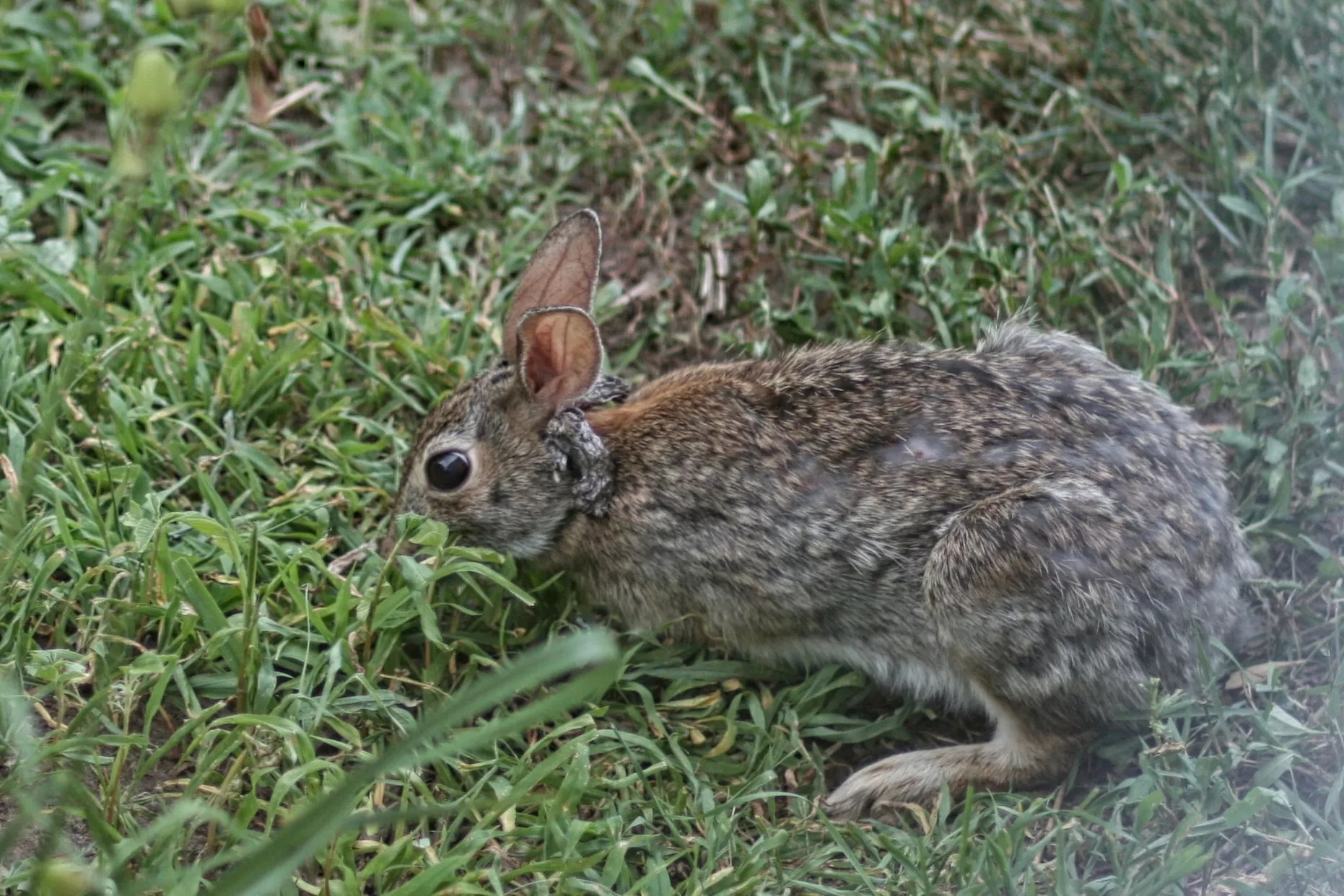
Stanford University

Audio By Carbonatix
Reports and sightings of cottontail rabbit papillomavirus have been documented for centuries, but the symptoms have gone viral in a new sense this summer.
Photos of wild rabbits with wart-like horns and tentacles have been sweeping the internet over the last few days, with many sightings of the afflicted animals taking place in Colorado. Last week, several people in south Fort Collins reported seeing rabbits near their properties with horn-like growths and tentacles around their bodies, including a reporter for 9News.
The growths are often seen on a rabbit’s head, face and back, evoking some memories of jackalopes, or mythical North American creatures that look like jackrabbits with antlers. But cottontail rabbit papillomavirus looks more like a horror story than a fantasy when rabbits catch it.

An illustration of a rabbit with “horns” featured in the 1789 French wildlife encyclopedia Tableau Encyclopedique et Methodique.
Wikimedia
Will you step up to support Westword this year?
At Westword, we’re small and scrappy — and we make the most of every dollar from our supporters. Right now, we’re $21,000 away from reaching our December 31 goal of $50,000. If you’ve ever learned something new, stayed informed, or felt more connected because of Westword, now’s the time to give back.
According to Colorado Parks & Wildlife, cottontail rabbit papillomavirus causes black nodules to grow on the skin, usually on the head. The nodules “can sometimes become elongated, taking on a hornâ€like appearance,” CPW adds.
Humans can’t catch the virus, according to CPW. And, despite looking like a sign of the apocalypse or brain-eating fungi, cottontail rabbit papillomavirus usually isn’t fatal.
“The growths have no significant effects on wild rabbits unless they interfere with eating [and] drinking. Most infected cottontails can survive the viral infection, after which the growths will go away,” a CPW bulletin on the virus says. “For this reason, CPW does not recommend euthanizing rabbits with papillomas unless they are interfering with the rabbit’s ability to eat and drink.”
According to CPW, the virus is specific to rabbits but can be spread by insects. Cottontail rabbit papillomavirus is more severe in domestic rabbits and should be treated by a veterinarian, the wildlife agency adds.

Despite looking deadly, rabbits often survive their bouts with the virus.
Flickr/Andrew Iverson
Avian Pox Spotted in Denver
Days after sightings of rabbits with horns and tentacles in Colorado, a south Denver resident was believed to have spotted avian pox on a domestic chicken. The disease, visually confirmed by CPW to Westword, causes wart-like postules and marks around a bird’s eyes and beak but doe not infect humans. Although outbreaks of avian pox are rare, it can be fatal to wild and domesticated birds, including pets and livestock, according to CPW.